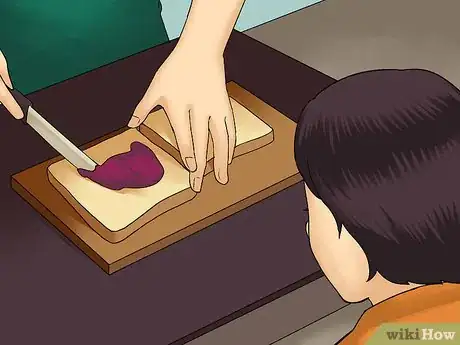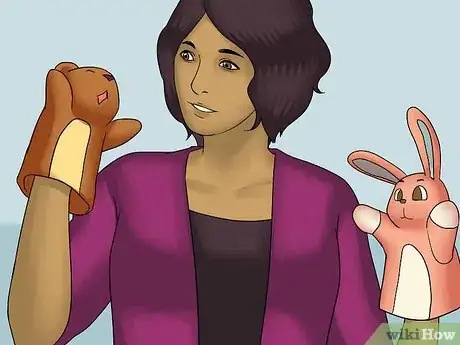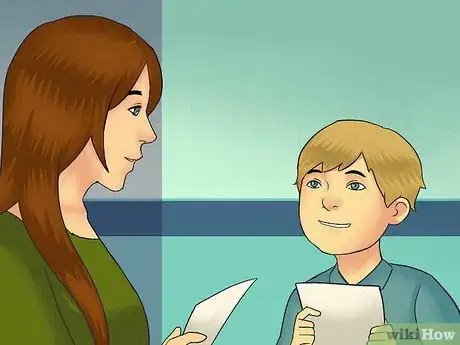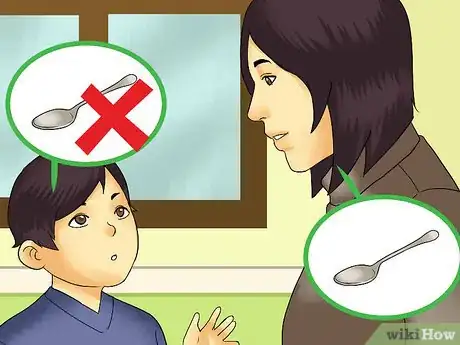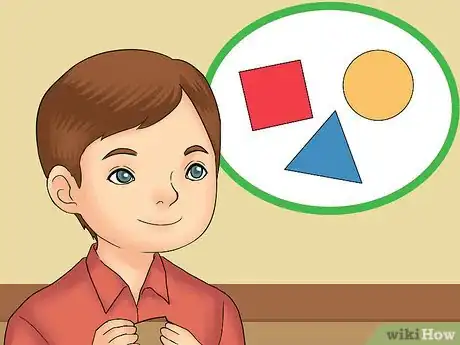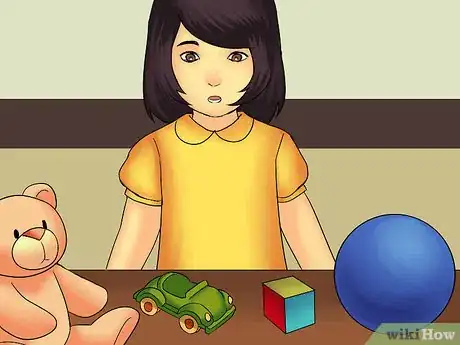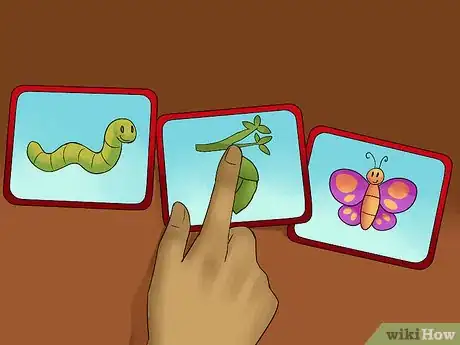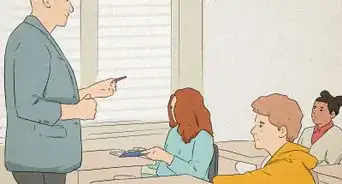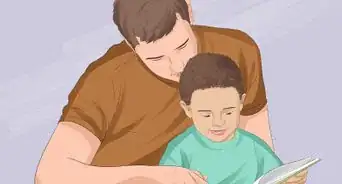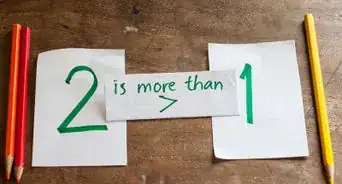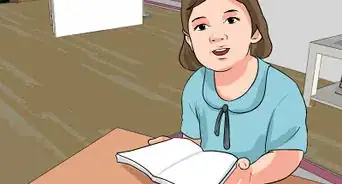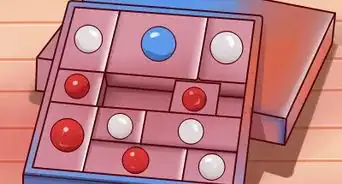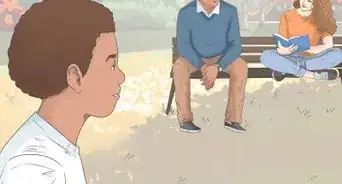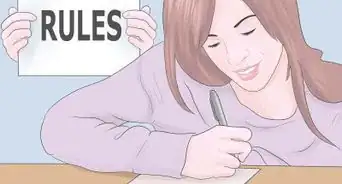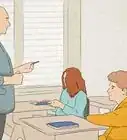This article was co-authored by Sylvia Rath. Sylvia Rath is a Parenting Specialist and the Director of Little Village Nursery School in Los Angeles, California. With over 30 years of experience, Sylvia guides parents through the preschool years and beyond by teaching respectful communication and positive discipline methods. Sylvia holds a BA in Psychology and Early Child Development from Antioch University. Before working at Little Village Nursery School, she taught preschool for eight years.
wikiHow marks an article as reader-approved once it receives enough positive feedback. In this case, several readers have written to tell us that this article was helpful to them, earning it our reader-approved status.
This article has been viewed 166,235 times.
Sequencing is understanding how a series of objects, events, and time occur in a specific and logical order. This is a very important concept for preschool children to develop, as it allows children to recognize patterns that make the world more understandable and predictable. However, it is also a very abstract concept and takes a lot of practice to master. Fortunately, there are a lot of natural, simple, and fun ways to teach sequencing!
Steps
Introducing Sequencing Words
-
1Use sequencing words in conversation. Use words like first, second, third, next, in front of, after, and last when you talk with your children. For instance, while waiting at the crosswalk, you might say, "See the cars at the red light? The first car is blue, and the second car is green. The last car is red."[1]
- Construction play is a terrific source of sequencing. Describe what your child has built: "I see that you put a big block in back of the triangle. Look at how you also put a little block on top of that big block."
- Encourage your child to answer open-ended questions. You might say, "Nina, what do you want first, the scissors or the glue stick?" "Who was the first student at school today?" "What is the last thing left in the shopping bag?"
-
2Talk with your kids about their daily activities. Many children have a working understanding of words as first, second, third, next, in front of, after, and last by the age of 4. However, not all children have a firm grasp of the concept. Engaging children in language and discussion about their daily activities will help them to build their understanding of sequencing.[2]
- For example, as the child is getting dressed to go outside, you might say, “First, put on your jacket. Next, put on your hat and mittens. Then, we will be ready to go to the playground."
- You could also have the child talk about the process of tying their shoes. Put the shoe on the child’s foot and tie it while they describe what to do first, next, and last.
- Ask the child to explain what to do first, next, and last during events throughout their day such as eating lunch, cleaning up, going to the bathroom, or having a fire drill. Let the child talk about each step as it is happening.
Advertisement -
3Read books together and talk about the order of story events. Understanding sequencing is the precursor to retelling stories. Children begin to understand that stories follow a sequence that include a beginning, middle, and an end. For example, you might read and experiment with Goldilocks and the Three Bears.[3]
- Read the story to your child, with pauses in between each event to ensure they understand what has happened.
- Ask your child, "What happened first in the story, next, and last?"
- Or you might ask, "What did Goldilocks do first: eat the porridge or fall asleep in Baby Bear's bed?"
- If your child doesn't know the answer, help your child find the answer in the story.
Using Play to Develop Sequencing
-
1Play the robot game. This is a game that uses a lot of sequencing and communication skills. An adult or teacher is a "robot" that will follow directions given by a child very, very literally![4]
- Ideally, there is a task the robot is supposed to do, such as make a jelly sandwich. The child has to give a command, and the robot will do it, even if the direction is incomplete!
- This can lead to funny situations. For instance, the child may forget to tell the robot to reach inside the bread bag, or open the top of the jelly jar. They forget to mention that the jelly goes in the middle of the sandwich.
- This game reinforces concepts of sequencing, but also how to communicate instructions clearly and completely.
-
2Create puppet shows. Dramatic play helps children build communication skills. Puppets are a great way of unfolding dramatic play, and some children are more comfortable storytelling in this way. Use puppets to tell a familiar story (like Goldilocks or Jack and the Beanstalk), or make up a new story with your child. Emphasize that the story must have a clear beginning, middle, and end.[5]
- Purchase ready-made puppets or make your own.
- You could also use flannel or felt board characters. Print pictures of storybook characters and attach Velcro to the back of each one. Ask the child to tell the story in order of sequence, and put the characters in order on the board. If they skip a step, redirect them to give them a chance to see why the answer is incorrect.
-
3Play a match game for analyzing story sequences. Once your child is 5 or 6 years old and begins to have a grasp of sequencing concepts, you can move on to more advanced games. Create a match game by writing questions and answers on different sheets of paper. First, read a story together, then create the match game.[6]
- On separate sentence strips write sequencing questions: What happened first in the story? What happened next? What happened last?
- On separate sentence strips write an answer for each question.
- Read the story to your child.
- Read the sentence strips with the sequencing questions.
- Read the sentences strips with the answers (out of order).
- With your child select the correct answer for each question.
- Reread sections of the story if incorrect answers were selected.
-
4Play a sequencing version of “I Spy.” To play a typical game of I Spy, one person (the spy) selects an object. The spy provides clues about the object (such as color, material, or texture) while the other players guess what it is. After the players figure out what the object is, talk about the object in a sequence that explains what the object does.[7]
- For instance you might say, “I spy a spoon. I use a spoon to eat oatmeal. I eat oatmeal to be strong and healthy. I want to be strong and healthy so I can run and jump.”
- Use higher-order questioning when playing games like “I Spy.”
- Ask the players to keep going until they can’t think of anything else to add.
-
5Use singing and clapping to teach sequencing. Sing familiar tunes with kids, and have them clap along with the rhythm. Once they have the hang of a song, pause periodically while you are singing, and have them fill in the appropriate lyrics and/or claps.[8]
- You can take turns leading the song and pausing, or being the one who fills in.
- Some songs to use include "Old MacDonald," "This Old Man," or "The Itsy Bitsy Spider."
Creating Visual Sequencing Models
-
1Use sequence words to describe the arrangement of items. Place 4 items in sequential order from left to right. Discuss how the items are arranged using sequencing words: first, second, third, last, next, and after.[9]
- You might say, “The large red square is first. The blue triangle is second. The yellow circle is after the blue triangle, and the red triangle is last.”
- Or you might say, “The red square is first. The blue triangle is next to the square. The yellow circle is after the blue triangle, and the red rectangle is last.”
- Then, have the child put the items in order and tell you which is first, next, and last. You can also do this with toys.
-
2Ask your child to sequence toys and items according to your directions. Gather items to sequence. Make the activity fun! Have your child gather some of their favorite toys and items from around the house. Items should vary in color, shape, and/or size.[10]
- You might say, “Place the blue ball first, and the bear second. Place the car third, next to the bear. Place the timer last.”
-
3Put pictures out of order for a tougher exercise. When your child has a strong understanding of sequencing objects, introduce a series of pictures or photographs that tell a story. Guide your child by asking what would happen first, second, next, and so on. Have your child arrange the pictures/photographs in the correct order. Then ask them explain the order.[11]
- Help your child self-correct misplaced pictures by asking, "Would that make sense?"
-
4Use family photos to teach sequencing. Gather together some photos of your child, from the time they were born to the present. Mix up the order of the photos. Ask your child to place them in a sequence from youngest to oldest.[12]
- Encourage them to pay attention to their size in each picture, and other distinguishing characteristics.
- Use words like younger, older, shorter, taller, smaller, larger.
- Ask your child to describe each photo. For example, they might say, “This is when I was a tiny baby,” or “This is when I learned to play soccer.”
Expert Q&A
Did you know you can get expert answers for this article?
Unlock expert answers by supporting wikiHow
-
QuestionHow would you make a sequence of "get in the car?"
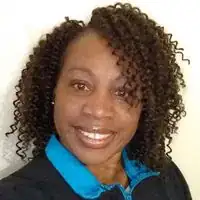 Andree Baham JohnsonAndree Baham Johnson is a Certified Pre-K Teacher in Louisiana. She received her Early Childhood Teacher Certification in 1993.
Andree Baham JohnsonAndree Baham Johnson is a Certified Pre-K Teacher in Louisiana. She received her Early Childhood Teacher Certification in 1993.
Certified Pre-K Teacher
References
- ↑ http://www.readingrockets.org/article/teaching-sequence
- ↑ http://www.readingrockets.org/article/teaching-sequence
- ↑ http://www.readingrockets.org/article/teaching-sequence
- ↑ http://blog.stageslearning.com/blog/what-happens-next-strategies-for-teaching-your-child-sequencing-skills
- ↑ http://blog.stageslearning.com/blog/what-happens-next-strategies-for-teaching-your-child-sequencing-skills
- ↑ https://www.speechandlanguagekids.com/teach-sequencing-skills-children/
- ↑ https://www.superduperinc.com/handouts/pdf/167%20Sequencing.pdf
- ↑ https://www.superduperinc.com/handouts/pdf/167%20Sequencing.pdf
- ↑ https://www.superduperinc.com/handouts/pdf/167%20Sequencing.pdf



